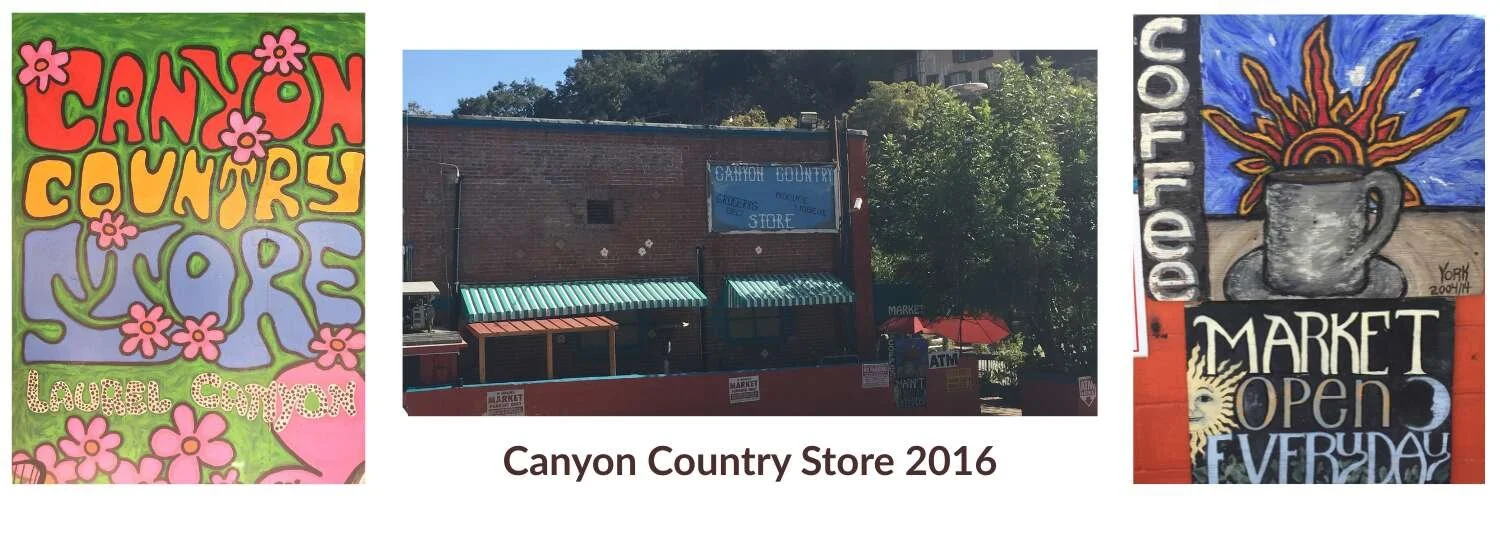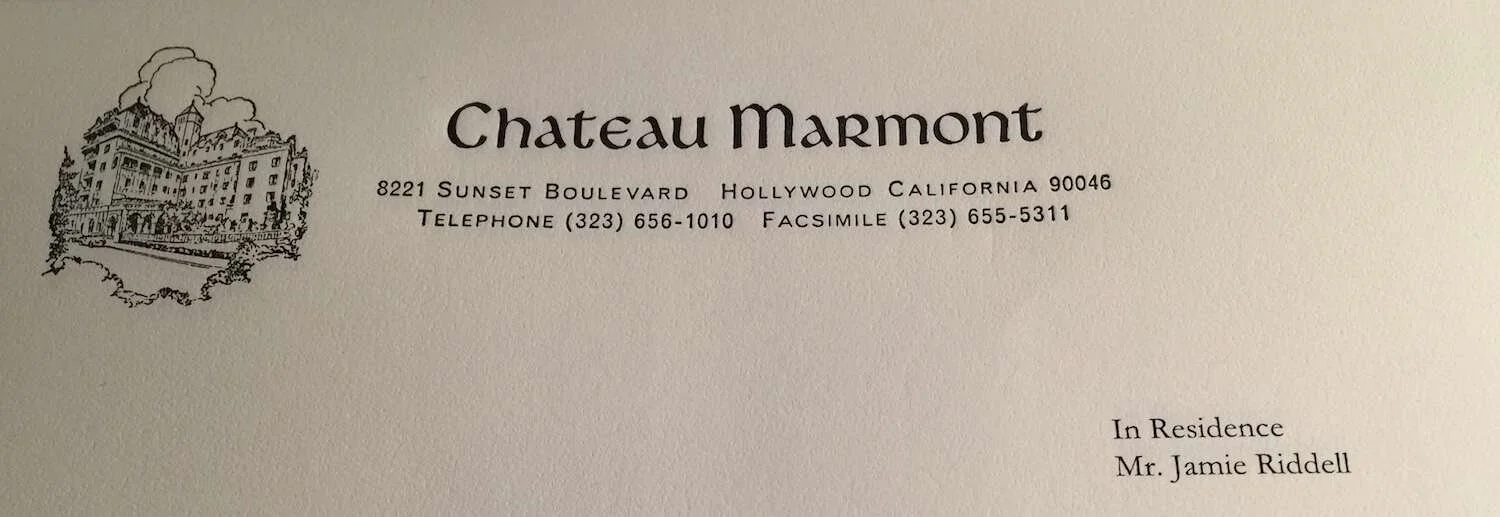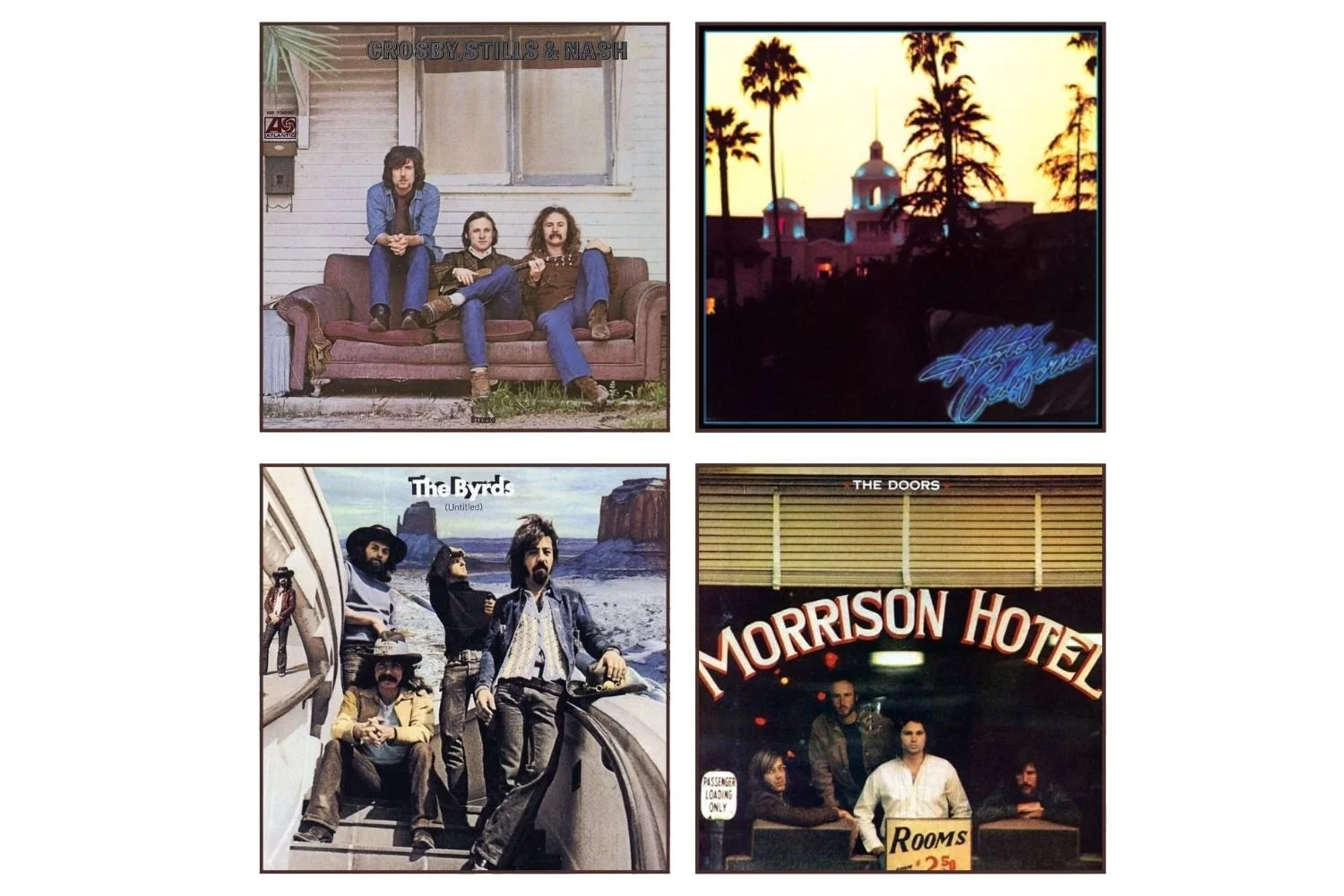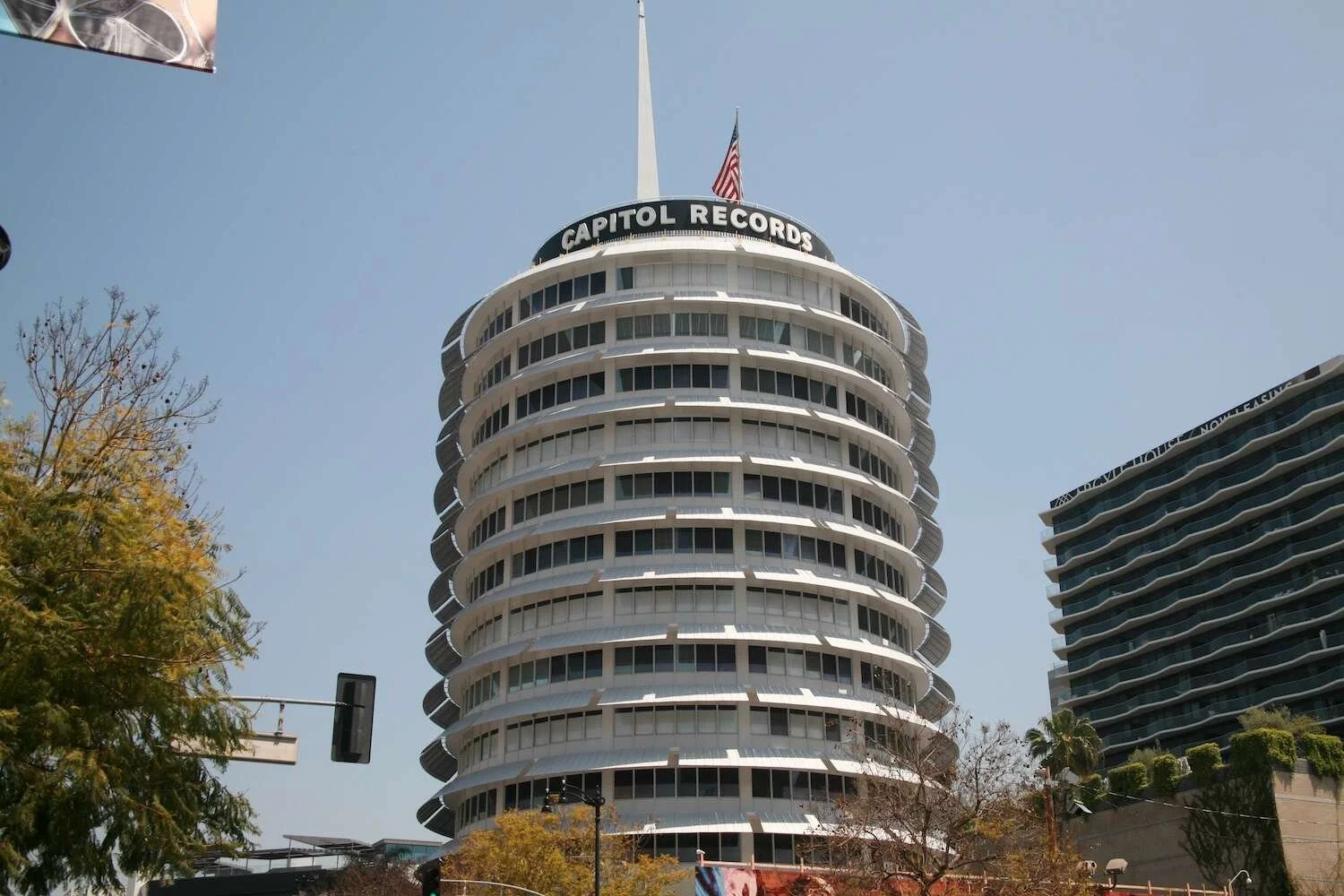Legendary Los Angeles Rock n Roll Landmarks: A Trip Through Music History
Los Angeles isn’t just a city; it’s a soundtrack, a legacy, and for music fans, a living museum of rock and roll. From the sun-soaked canyons to the gritty clubs of the Strip, LA has long been the backdrop where legends were made, where myths took root, and where the soundtrack of a generation was recorded, photographed, and performed.
But where did it happen? Where was it recorded and where did they stay? Consider this your ultimate guide to the Rock and Roll Landmarks of Los Angeles. We’ve added plenty of links, videos, songs and maps to help you to follow your own particular vein of interest. Have we missed a landmark you know about? Let us know in the comment!
Let’s start with the map...
Where Rockers Lived and Stayed in the City of Angels
Not every rock star lived in Los Angeles. Some were just passing through whilst others like John Mayall, Graham Nash, Neil Young and Joni Mitchell made it their home. And possibly no more iconic a home address than Laurel Canyon.
Laurel Canyon
No place captures the spirit of the Sixties and Seventies LA scene quite like Laurel Canyon. Nestled in the Hollywood Hills, this quiet neighbourhood once housed the likes of Joni Mitchell, Jim Morrison, Frank Zappa, and the members of Crosby, Stills, Nash & Young. It is where Joni met Graham Nash who met David Crosby and Stephen Stills. It is where Nash would later write, “our house'“ about his time living with Joni at her house on 8217 Lookout Mountain. It is also where one of the most famous pictures, of Joni was taken by friend and Canyon neighbour Henry Diltz.
You might know some of the other addresses in Laurel Canyon, like Blue Jay Way where not one, but two classic songs were written.
John Mayall visited the Canyon in 1968 and ended up staying, living at 8353 Grandview Drive. He wrote a full album about the place, ‘Blues from Laurel Canyon’ which include song titles like ‘Walking on Sunset’ and ‘Laurel Canyon Home’.
And how about another song from the Canyon? This time from another resident Jim Morrison. Love Song was written about the street behind the Canyon Country Store about half way down Lauren Canyon Boulevard. The store is also a cool place to check out. It was the go to place for the Canyon dwelling rock stars and still has a ‘feel’ to it today. Pop in for some snacks and check out the pictures on the walls. Who can you spot?
There are too many stories and stars from Laurel Canyon to mention here but we do recommend following this great Instagram account for more tales like this one.
Topanga Canyo: Eagles and Young in the Hills
Head west from Los Angeles and you’ll eventually reach Topanga Canyon, a winding road that cuts up from Pacific Coast Highway at Malibu through the rugged Santa Monica Mountains. Unlike Laurel Canyon — minutes from Sunset Boulevard and the Hollywood Strip — Topanga always felt a little further out, a little wilder.
In the late sixties and early seventies, this remoteness made it a magnet for musicians, poets, and artists chasing a freer way of life. Rustic cabins, dirt roads, and an anything-goes atmosphere gave Topanga a different character to its more famous neighbour.
For the Eagles, it was an early base. Glenn Frey and Don Henley both spent time here during the band’s formative years, part of a scene that also included Neil Young and members of Crosby, Stills & Nash. This location inspired much of Young’s ‘After the Gold Rush’ period. There is a story that David Crosby was inspired by the view from Young’s Topanga Canyon home, to write the classic ‘Wooden Ships’ with Paul Kantner from Jefferson Airplane. There seems to be a few differing stories on the writing location so take that with a pinch of salt.
That mix of rural seclusion and West Coast cool seeped into the Eagles’ first records. The canyon’s wide-open feel can be heard in songs like *Take It Easy*, while the band’s harmonies were sharpened in the same hillside cabins that echoed with so much music of the era.
Drive Topanga today and you’ll still catch glimpses of that spirit — weathered shacks, hand-painted signs, and sudden views out to the Pacific. It remains one of LA’s most evocative rock landmarks: a canyon where the Eagles quietly found their wings.
Venice Beach deserves a mention as the spiritual birthplace of The Doors. It was here that Jim Morrison and Ray Manzarek first shared the idea of starting a band, their conversations drifting between poetry and possibility. They took their name from The Doors of Perception by Aldous Huxley — itself a nod to opening the mind.
Head to Speedway & 18th Place Venice, CA 90291 to see this huge mural to Jim Morrison. A few years back the mural was updated, changing the colour from blue to red but it still looks cool!
Chateau Marmont
A true rock and roll refuge. Possibly no greater Rock n’Roll Landmark exists in Los Angeles. As Harry Cohn of Columbia Pictures once said, "If you must get into trouble, do it at the Chateau Marmont." This West Hollywood hideout has seen it all — Jim Morrison dangling from windows, John Belushi’s final days, and countless band breakups, makeups, and misadventures. Michael Hutchence was a regular guest.
It was also the home for Daisy Jones for a while. If you haven’t seen it yet, Daisy Jones & The Six delivers a brilliant story, great songs and plenty of LA landmarks on screen!
The Chateau is a blank canvas for rock stars to make their own, but you can stay there too.
Headed note paper for guests of the Chateau
The Riot House - now the Andaz West Hollywood
Keith Richards threw a TV out the window here whilst Led Zeppelin allegedly rode motorbikes through the corridors. It's rock mythology with a postcode. While the balconies have been enclosed and the wildness tamed, the echoes still linger. Today, you can stay here and look out toward the Whisky, the Rainbow, and the Roxy just across Sunset. This is where Robert Plant proclaimed, “I am a Golden God!” Possibly one of the most iconic Rock n Roll photos from LA.
The Beverly Hills Hotel
Immortalised on the cover of Hotel California, the Beverly Hills Hotel is more than just a pink stucco landmark — it’s a symbol of LA’s seductive promise. While the Eagles used it as a metaphor for excess and illusion, the hotel itself has long been a real-life playground for the rich and recognisable. These days you’re more likely to spot Jay-Z, Beyoncé or Keanu Reeves than a ’70s rock band, but the aura of stardom remains.
And for Eagles fans, standing beneath the palm-lined portico offers a surreal sense of déjà vu — like stepping inside the album.
Los Angeles featured on Album Covers
Crosby, Stills & Nash – 815 Palm Avenue
The sofa, the shack, the photo mix-up. Photographed by Henry Diltz, this now-legendary cover was taken in West Hollywood. The building was torn down the day after the shoot, so what you see is a one-time moment that couldn’t be recreated.
The Eagles – Hotel California (The Beverly Hills Hotel)
Shot at twilight using a cherry picker to capture the hotel’s domes in golden light. It’s one of rock’s most iconic images — mysterious, alluring, and loaded with meaning. The real hotel still stands on Sunset Boulevard, palm trees and all.
The Doors – Morrison Hotel, 1246 S Hope Street
Another Henry Diltz classic. The band slipped into the lobby for a quick, guerrilla-style shoot that captured them framed behind the motel’s gritty window. The hotel is long gone, but the image — and the album — are pure LA. This wasn’t the only album cover they shot in LA - the cover of ‘Waiting for the Sun’ was taken up on Laurel Canyon.
The Byrds – Untitled (Griffith Observatory)
Shot on the stairway up to the Griffith Observatory, with the Hollywood Hills swapped for a desert vista in post-production. The cover shows the band at a transitional moment in 1970 — somewhere between past glories and a new sound.
Clockwise from top left: Crosby, Stills, Nash ; Hotel California ; The Byrds ;Morrison Hotel
Pink Floyd – Wish You Were Here
3400 Warner Blvd, Burbank. The ‘burning man’ cover was shot on the backlot of Warner Brothers Studios just over the way in Burbank. The album designers Hipgnosis (Storm Thorgerson and Aubrey ‘Po’ Powell) hired two stuntmen to perform ‘the handshake’ for real whilst Po took as many photos as possible.
Iconic Music Venues
The Roxy: Owned by Lou Adler and briefly David Geffen, it hosted everyone from Neil Young to Genesis. Frank Zappa recorded his live album Roxy & Elsewhere here in 1973, capturing the club's gritty, energetic atmosphere.
The Troubadour: Perhaps the most important singer-songwriter venue in LA. This is where Elton John played his first US performance in 1970 — an electric night that earned him instant acclaim. The club also nurtured the careers of Linda Ronstadt, Jackson Browne, the Eagles, and Joni Mitchell.
The Rainbow Bar & Grill: A short walk from the Whisky and just across the street from The Viper Room, the Rainbow has always been more than a bar. It was Lemmy's second home, John Belushi’s last supper, and the backdrop for countless rock stories. From its walls of memorabilia to the heavy metal heyday of the 1980s, the Rainbow remains a living landmark. From here, you can look up to see The London West Hollywood Hotel — a modern vantage point with a view across rock history. (Read more about our stay at The London West Hollywood.
Hollywood Bowl: Not far from the Strip, this open-air amphitheatre has hosted everyone from The Beatles to The Rolling Stones, and more recently David Gilmour’s Luck and Strange Tour. It’s a bucket-list venue for performers and fans alike — and worth a detour if you’re in town for a show.
LA Studios That Shaped the Sound
For some, a recording studio is just a room with microphones. But certain studios have a way of capturing something more — a kind of magic that seeps into the tape. Bands walk in, ideas take flight, and history gets made. In Los Angeles, no studio embodies that legacy more than Capitol Records. With its distinctive tower on Vine Street, it’s one of the most iconic recording studios in the world — rivalled only, perhaps, by Abbey Road.
The iconic Capital Records building
Inside, the acoustics are flawless, the ghosts of sessions past hang in the air, and the house band was none other than the Wrecking Crew — an elite group of session musicians who quietly played on countless hits from the ’60s and ’70s. Artists came for the sound, but they stayed for the myth. From Pet Sounds to Purple Rain, so much of LA’s musical soul was laid down in these rooms.
Sunset Sound: Where the Doors laid down their first two albums. After recording in the South of France, The Rolling Stones produced Exile on Main Street here. Prince, Zappa, and the Beach Boys all followed.
The Record Plant: Think "Hotel California," "Rumours," and "Appetite for Destruction."
EastWest Studios: From "California Dreaming" to "Thriller," the walls of this place have heard it all.
Rock Memories Etched into the City
Not every landmark is a studio or a stage. Some of LA’s most memorable music moments happened in the unlikeliest of places — rooftops, crossroads, and corners that became legendary in a single take.
Republic Liquor – U2
On March 27, 1987, U2 took to the rooftop of a downtown liquor store at 7th and Main to film a live video for “Where the Streets Have No Name.” The impromptu performance stopped traffic, drew a crowd, and paid homage to The Beatles’ rooftop farewell. Today, the building is a Mexican restaurant called Margarita’s Place, but for fans, it’s still a pilgrimage stop.
Heart Attack & Vine – Tom Waits
A rough, poetic corner of Hollywood, immortalised in song by Tom Waits. The phrase — a twist on the intersection of Hollywood and Vine — became the title of a track later covered by Screamin’ Jay Hawkins and used in a Levi’s ad. More than a location, it’s a mood: all neon buzz and late-night regret.
Griffith Observatory
This iconic LA landmark has more musical connections. It was the location for some wonderful scenes in La La Land. There is a bust of James Dean and a tree planted in in honour of George Harrison. Sadly the original tree was eaten by ‘killed by beetles‘ and had to be replaced in 2014. The Mt. Hollywood Tunnel up to the top is is also the entrance to Toontown , but that’s another story.
Los Angeles is a city layered with stories, and we've barely scratched the sufrace. From dusty doorways to echoing studios, LA is still humming with the sounds of its past. And for those of us who travel in search of music, of meaning, and of the places where it all happened, Los Angeles remains a pilgrimage worth taking. What else can we add to this list?



